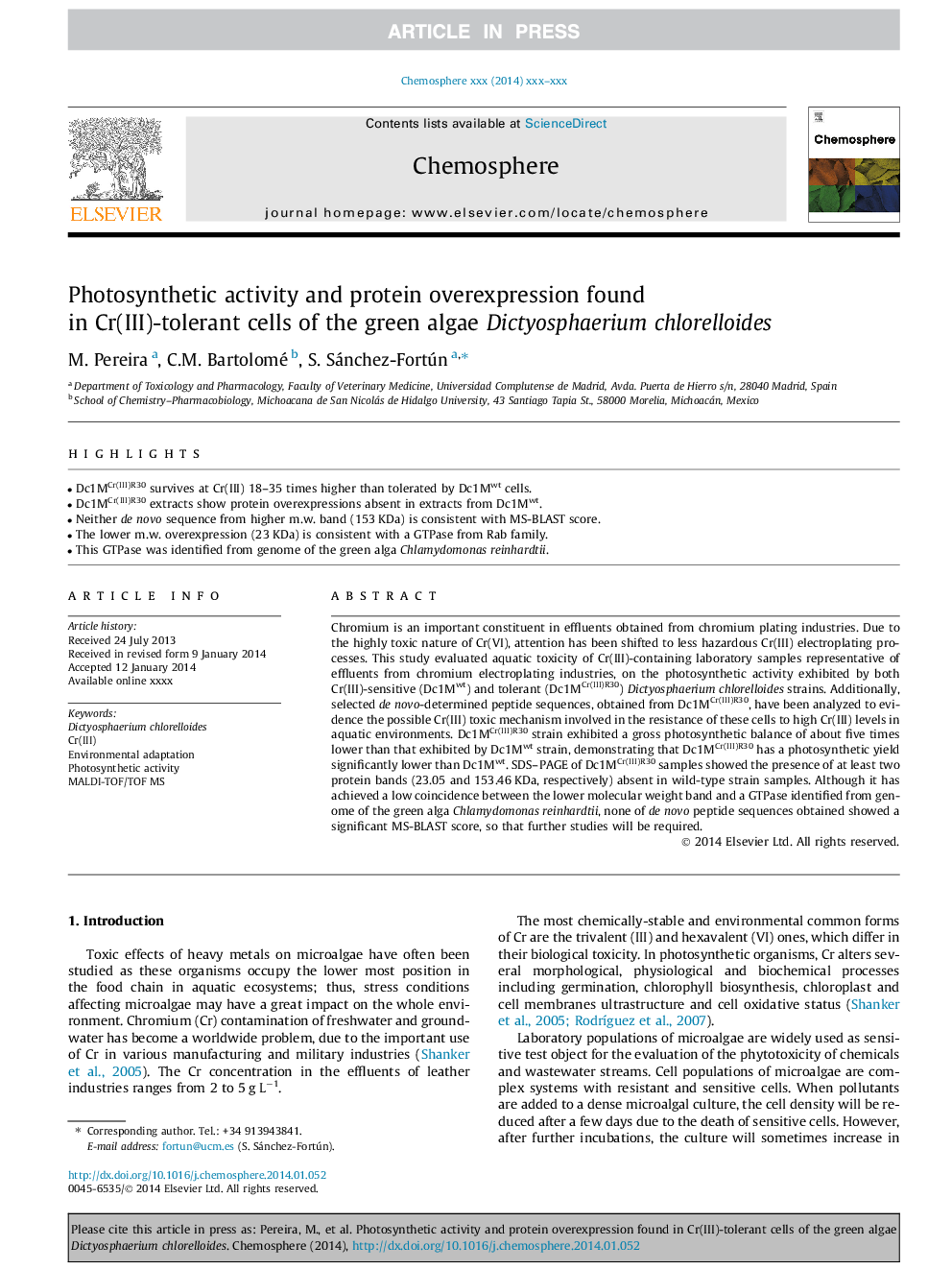| Article ID | Journal | Published Year | Pages | File Type |
|---|---|---|---|---|
| 6309396 | Chemosphere | 2014 | 7 Pages |
Abstract
Chromium is an important constituent in effluents obtained from chromium plating industries. Due to the highly toxic nature of Cr(VI), attention has been shifted to less hazardous Cr(III) electroplating processes. This study evaluated aquatic toxicity of Cr(III)-containing laboratory samples representative of effluents from chromium electroplating industries, on the photosynthetic activity exhibited by both Cr(III)-sensitive (Dc1Mwt) and tolerant (Dc1MCr(III)R30) Dictyosphaerium chlorelloides strains. Additionally, selected de novo-determined peptide sequences, obtained from Dc1MCr(III)R30, have been analyzed to evidence the possible Cr(III) toxic mechanism involved in the resistance of these cells to high Cr(III) levels in aquatic environments. Dc1MCr(III)R30 strain exhibited a gross photosynthetic balance of about five times lower than that exhibited by Dc1Mwt strain, demonstrating that Dc1MCr(III)R30 has a photosynthetic yield significantly lower than Dc1Mwt. SDS-PAGE of Dc1MCr(III)R30 samples showed the presence of at least two protein bands (23.05 and 153.46Â KDa, respectively) absent in wild-type strain samples. Although it has achieved a low coincidence between the lower molecular weight band and a GTPase identified from genome of the green alga Chlamydomonas reinhardtii, none of de novo peptide sequences obtained showed a significant MS-BLAST score, so that further studies will be required.
Keywords
Related Topics
Life Sciences
Environmental Science
Environmental Chemistry
Authors
M. Pereira, C.M. Bartolomé, S. Sánchez-Fortún,
